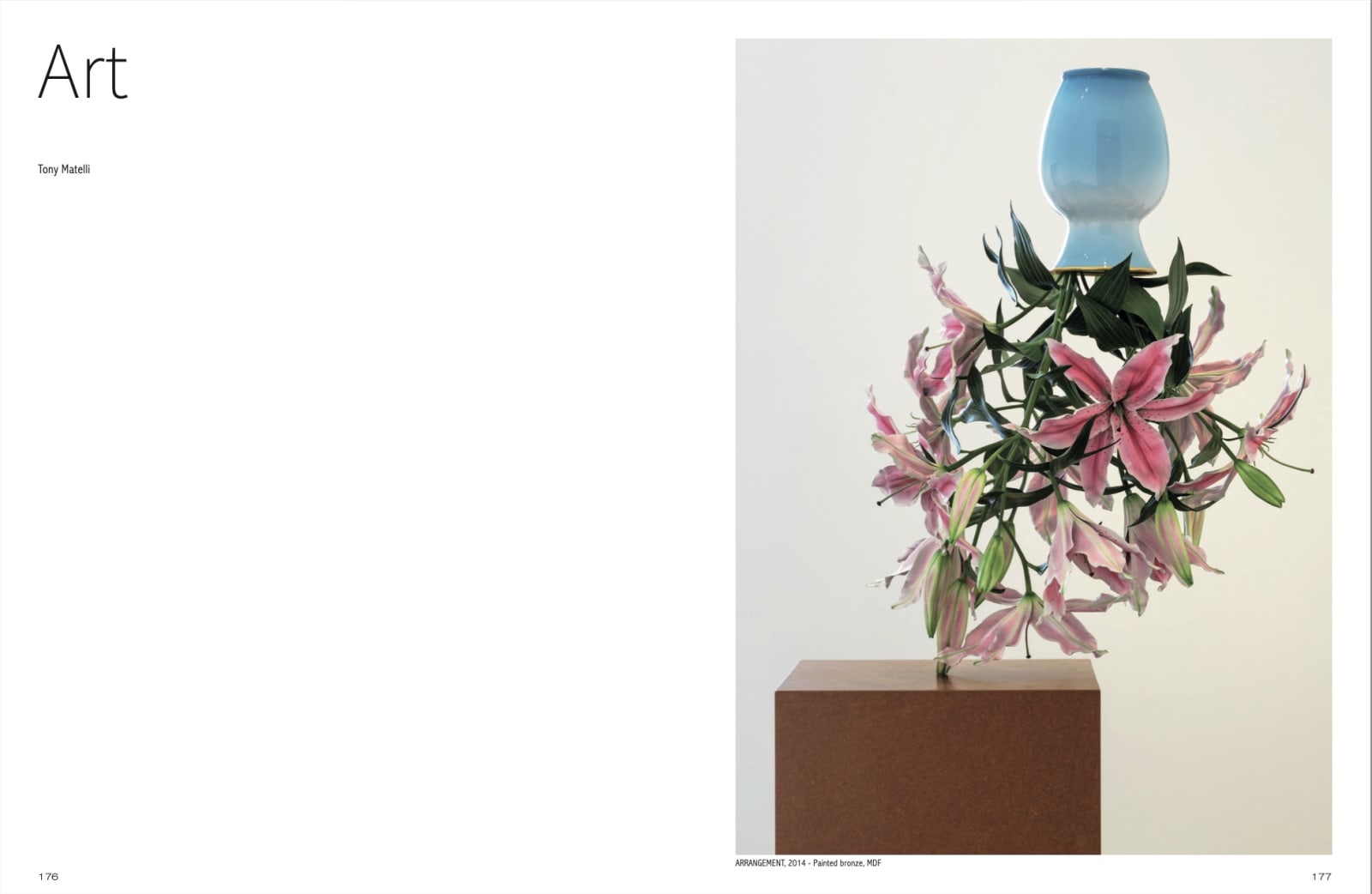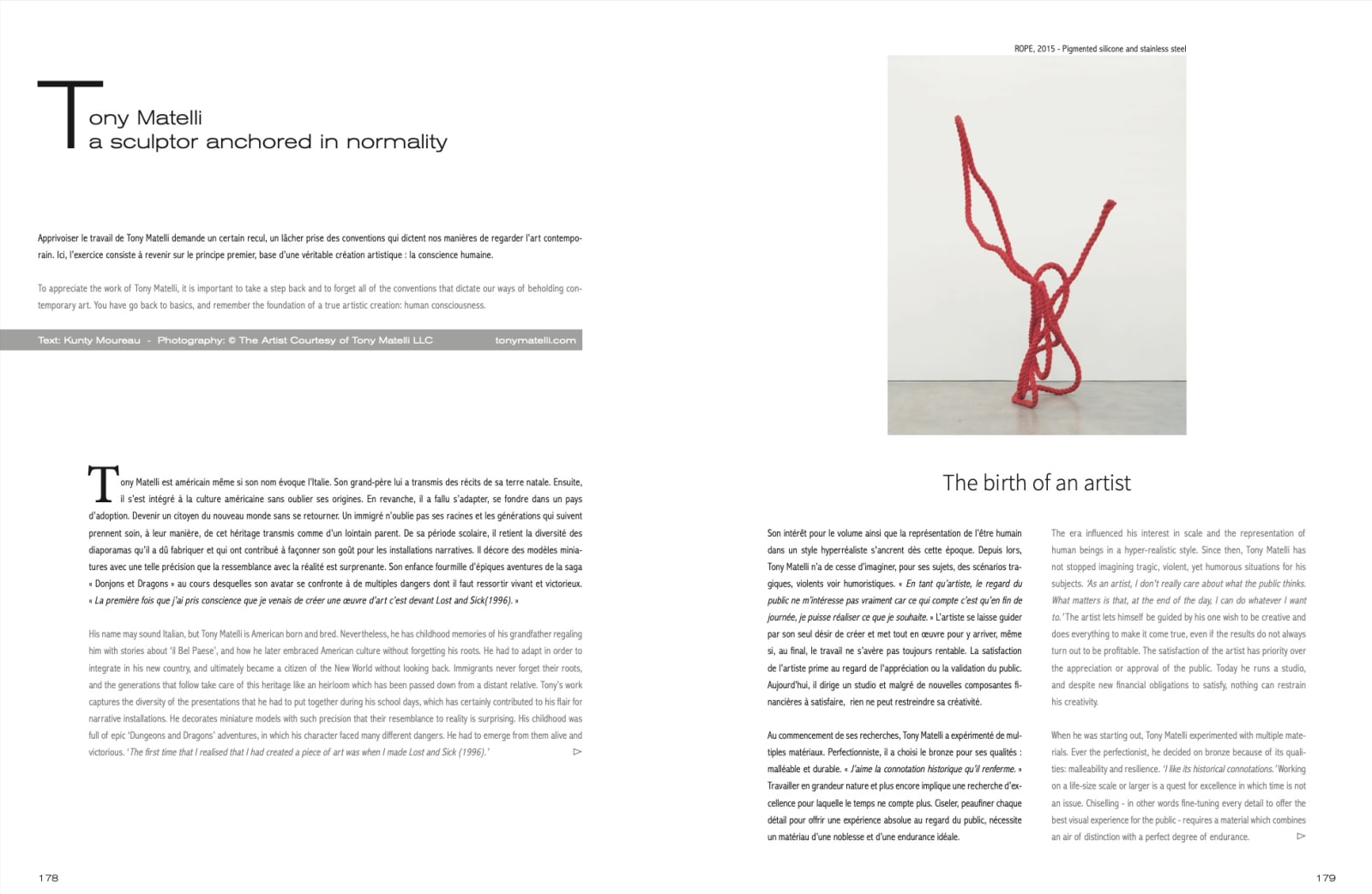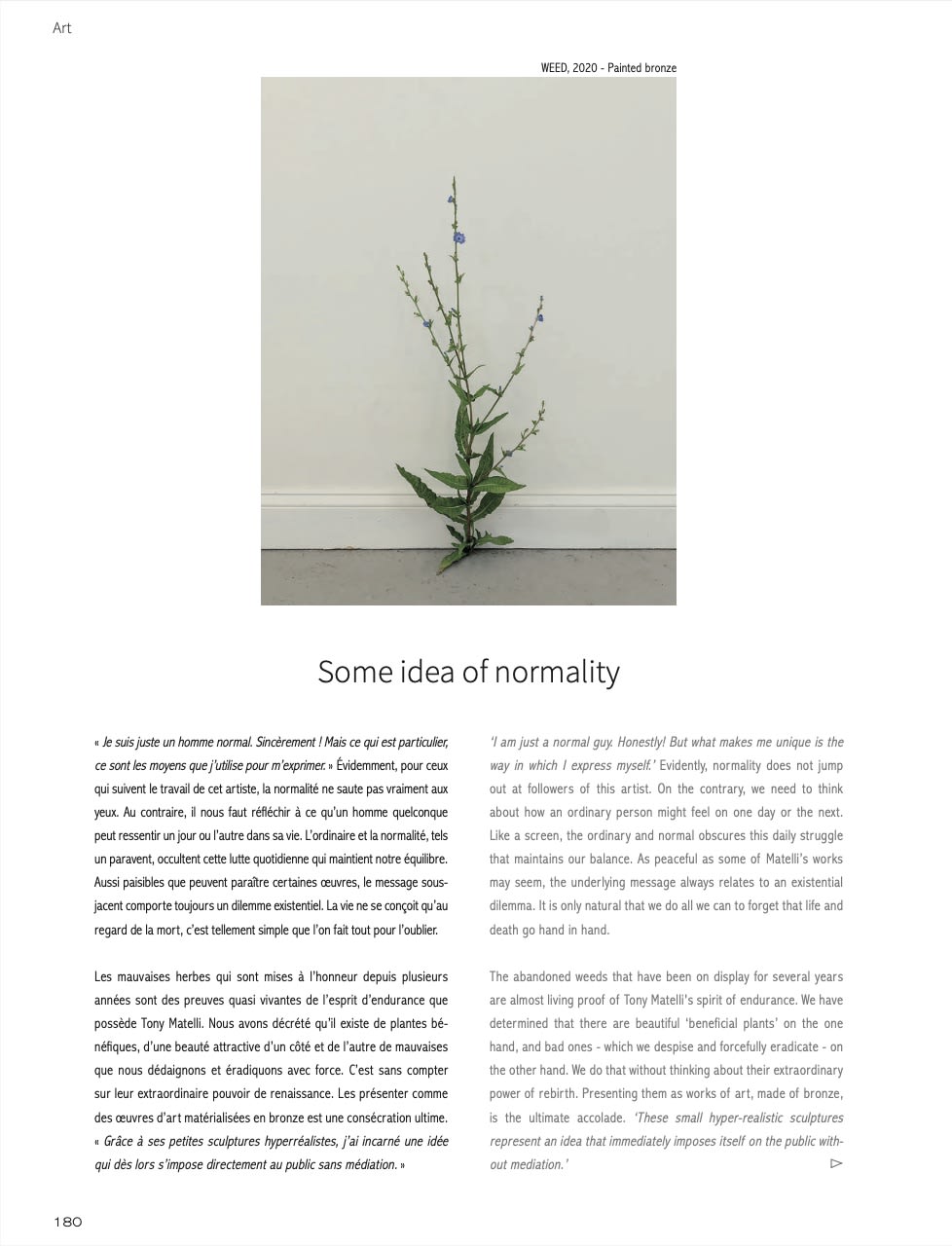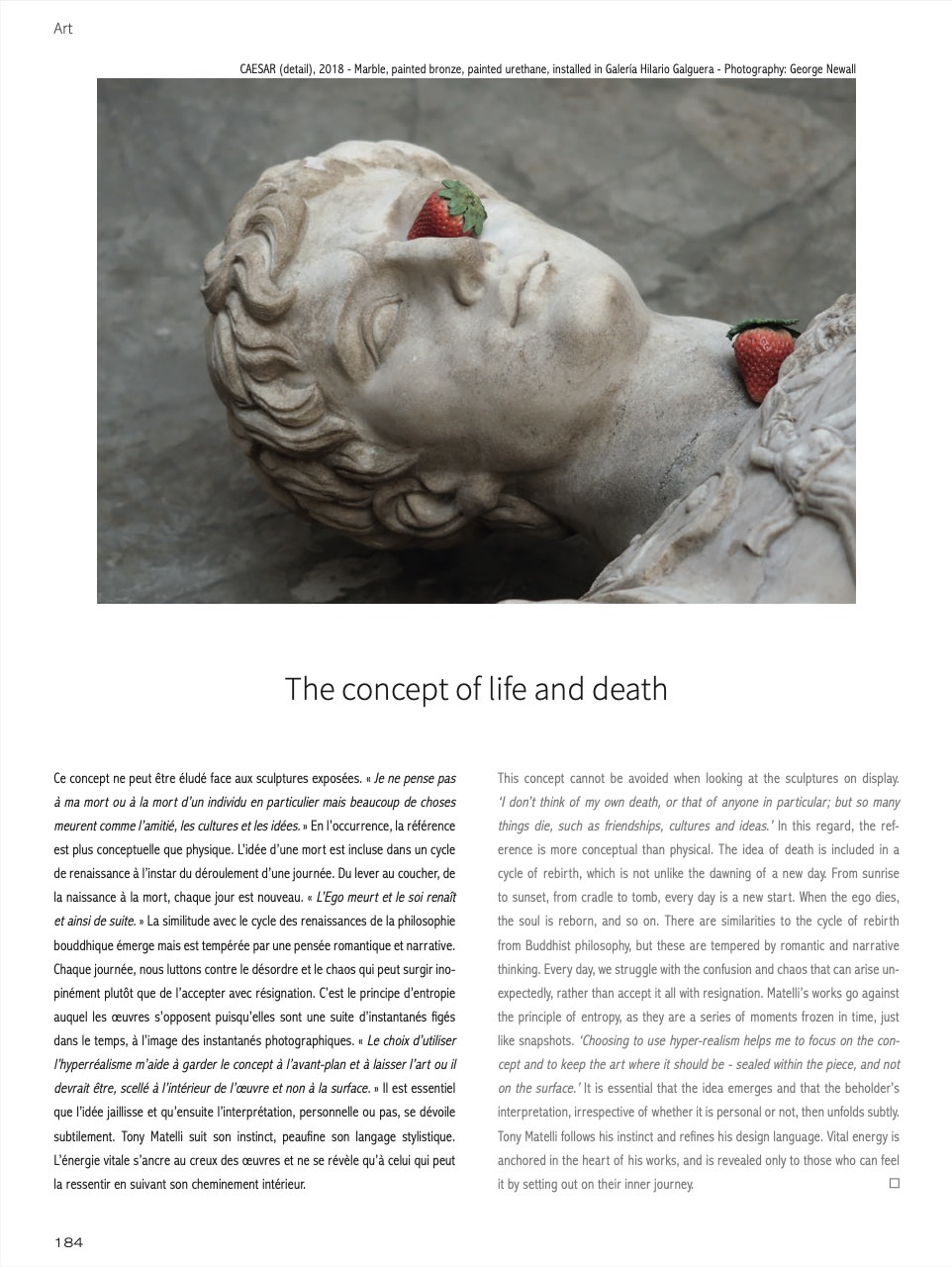Kunty Moureau for Villas
To appreciate the work of Tony Matelli, it is important to take a step back and to forget all of the conventions that dictate our ways of beholding con- temporary art. You have go back to basics, and remember the foundation of a true artistic creation: human consciousness.
His name may sound Italian, but Tony Matelli is American born and bred. Nevertheless, he has childhood memories of his grandfather regaling him with stories about ‘il Bel Paese’, and how he later embraced American culture without forgetting his roots. He had to adapt in order to integrate in his new country, and ultimately became a citizen of the New World without looking back. Immigrants never forget their roots, and the generations that follow take care of this heritage like an heirloom which has been passed down from a distant relative. Tony’s work captures the diversity of the presentations that he had to put together during his school days, which has certainly contributed to his flair for narrative installations. He decorates miniature models with such precision that their resemblance to reality is surprising. His childhood was full of epic ‘Dungeons and Dragons’ adventures, in which his character faced many different dangers. He had to emerge from them alive and victorious. ‘The first time that I realised that I had created a piece of art was when I made Lost and Sick (1996).’
The birth of an artist
The era influenced his interest in scale and the representation of human beings in a hyper-realistic style. Since then, Tony Matelli has not stopped imagining tragic, violent, yet humorous situations for his subjects. ‘As an artist, I don't really care about what the public thinks. What matters is that, at the end of the day, I can do whatever I want to.’ The artist lets himself be guided by his one wish to be creative and does everything to make it come true, even if the results do not always turn out to be profitable. The satisfaction of the artist has priority over the appreciation or approval of the public. Today he runs a studio, and despite new financial obligations to satisfy, nothing can restrain his creativity.
When he was starting out, Tony Matelli experimented with multiple mate- rials. Ever the perfectionist, he decided on bronze because of its quali- ties: malleability and resilience. ‘I like its historical connotations.’ Working on a life-size scale or larger is a quest for excellence in which time is not an issue. Chiselling - in other words fine-tuning every detail to offer the best visual experience for the public - requires a material which combines an air of distinction with a perfect degree of endurance.





